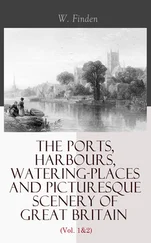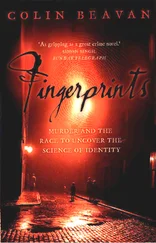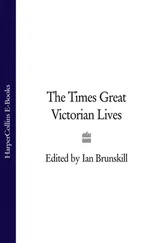The same day Detective-Inspector Jonathan Whicher received his orders to head for Road.
PART TWO
THE DETECTIVE
'I set forth to pave the way for discovery -
the dark and doubtful way'
From The Woman in White (1860), by Wilkie Collins

CHAPTER FOUR
A MAN OF MYSTERY
1 October 1814- 15 July 1860
It was still light as Whicher's train rolled towards west Wiltshire on that Sunday in 1860. Usually by July the pastures were broken up with blocks of yellow - tawny wheat or bright gold corn - but this year the summer had come so late that the crops were green as grass.
At 6.20 p.m. the train pulled into Trowbridge - a forest of factory towers and chimneys - and Whicher stepped out onto the railway station's narrow platform. The first building he came to as he left the ticket hall was John Foley's police station on Stallard Street, a two-storey structure dating from 1854, when the local force was founded. This was where Elizabeth Gough was being detained, of her own volition, until her examination was resumed the next day.
Trowbridge had made money from cloth for centuries. The coming of the railway in 1848 had brought even more prosperity - now, with a population of eleven thousand, it was the biggest factory town in the south of England. Wool mills and dyeing houses spread out to the left and right of the station - about twenty of them, powered by more than thirty steam engines. These were the factories that Samuel Kent inspected. On a Sunday evening they lay idle, but in the morning the machines would start to pound and whirr, and the air would thicken with smoke, soot, the smells of urine (collected in tubs from public houses and used to scour wool) and of the vegetable dyes streaming into the river Biss.
Whicher hired a porter to carry his luggage to the Woolpack Inn, Market Place, half a mile from the station. The pair crossed the bridge over the Biss - a small, slow tributary of the Avon - and walked to the town centre. They passed the houses of the Parade, a terrace built by rich Georgian clothiers, and the side streets crammed with weavers' cottages. Trade had been poor that year. Many sheep had died over the harsh winter, so wool was scarcer than usual, and the competitive mill-owners of northern England were selling their muslin cheap.
When Whicher reached the Woolpack, on the corner of Red Hat Lane, he paid the porter sixpence and went in. The inn was a compact stone building, with an arch at its centre, which offered rooms at is.6d . a night. Wine, cider, spirits and home-brewed ale were sold at the bar. Whicher may have ordered a drink or two: when in a tight spot, he once told Dickens, 'I couldn't do better than have a drop of brandy-and-water to keep my courage up.'
Jonathan Whicher was born in Camberwell, three miles south of London, on 1 October 1814. His father was a gardener, probably one of the village's many market gardeners, who grew cherries, lettuces, roses and willow for sale in the city. He may have tended the lawns and flowerbeds of the richer residents of the district - Camberwell was studded with the stucco villas and ornamental cottages of merchants seeking an airy retreat from London.
On the day of Jonathan's baptism, 23 October, the curate of St Giles parish church also christened the child of another gardener, and the babies of a shoemaker, a cabinetmaker, two coachmen, a flutemaker and a labourer. In one of the many variants to which his surname was prey, Jonathan was recorded as the son of Richard and Rebecca Whitcher. He was known as Jack. He had an older sister, Eliza, and at least one older brother, James. Another sister, Sarah, was born in August 1819, when he was four. That summer was remembered for its abundance of Camberwell Beauties, the large, velvety, dark-claret butterflies first seen in the area in 1748.
In the mid-1830s Jack Whicher was still living in Camber-well, probably in Providence Row, a small terrace of cottages at the northern, poorer end of the village. The cottages lay on Wyndham Road, close to a mill and backing onto nursery gardens, but in a wretched neighbourhood - 'as proverbial for its depravity as for its ignorance', according to a report published by the local school. Wyndham Road was frequented by shifty types - hawkers, costermongers, chimney sweeps - and by outright villains.
When Jack Whicher applied to join the Metropolitan Police in the late summer of 1837 he was just old enough, at twenty-two, and just tall enough, at five feet eight inches, to meet the entrance requirements. He passed the tests for literacy and physical fitness, and two 'respectable house-holders' of his parish vouched for his good character. Like more than a third of the early recruits, he was working as a labourer when he submitted his application.
On 18 September, Whicher became a police constable. His weekly wage - about PS1 - was only a slight improvement on his previous earnings, but his future was now a little more secure.
The Metropolitan Police, the first such force in the country, was eight years old. London had got so big, so fluid, so mysterious to itself that in 1829 its inhabitants had, reluctantly, accepted the need for a disciplined body of men to patrol the streets. The 3,500 policemen were known as 'bobbies' and 'peelers' (after their founder, Sir Robert Peel), as 'coppers' (they caught, or copped, villains), as 'crushers' (they crushed liberty), as 'Jenny Darbies' (from gendarmes ), and as pigs (a term of abuse since the sixteenth century).
Whicher was issued with dark-blue trousers and a dark-blue long-tailed coat, its bright metal buttons imprinted with a crown and the word POLICE. His division and number - E47, the 'E' for Holborn - was boldly marked on a stiff, buckled collar; beneath this, a leather stock four inches deep encircled his neck as protection against 'garotters'. His coat was fitted with deep pockets in which to stash a truncheon and a wooden rattle. He wore a chimney-pot hat with a glazed leather crown and leather supports down the sides. A fellow officer detailed the costume: 'I had to put on a swallow-tail coat, and a rabbit-skin high-top-hat, covered with leather, weighing eighteen ounces, a pair of Wellington boots, the leather of which must have been at least a sixteenth of an inch thick, and a belt about four inches broad, with a great brass buckle six inches deep . . . I never felt so uncomfortable in all my life.' An officer had to wear his uniform even when he was not at work, so that he could never be accused of concealing his identity. He put a band around his wrist to show when he was on duty. Beards and moustaches were banned. Many men grew sideburns instead.
At a time when all clothes were a uniform of sorts, the police kit had its merits: the journalist Harriet Martineau noted that an ambitious young working-class man could 'pass along the street somewhat more proudly, and under more notice' in this get-up 'than the artisan in his apron and paper cap, or the labourer in his fustian, or bearing the porter's knot' - fustian was the rough fabric from which labourers' jackets were cut, the porter's knot a pad to protect the shoulders when carrying a heavy load.
The perfect policeman was defined by restraint, anonymity, an absence of emotion. 'A hot temper would never do,' said Martineau, 'nor any vanity which would lay a man open to arts of flirtation; nor too innocent good-nature; nor a hesitating temper or manner; nor any weakness for drink; nor any degree of stupidity.' Andrew Wynter, a physician and writer, described the ideal constable as 'stiff, calm, and inexorable, an institution rather than a man. We seem to have no more hold of his personality than we could possibly get of his coat buttoned up to the throttling-point . . . a machine, moving, thinking and speaking only as his instruction-book directs . . . He seems . . . to have neither hopes nor fears.'
Читать дальше













